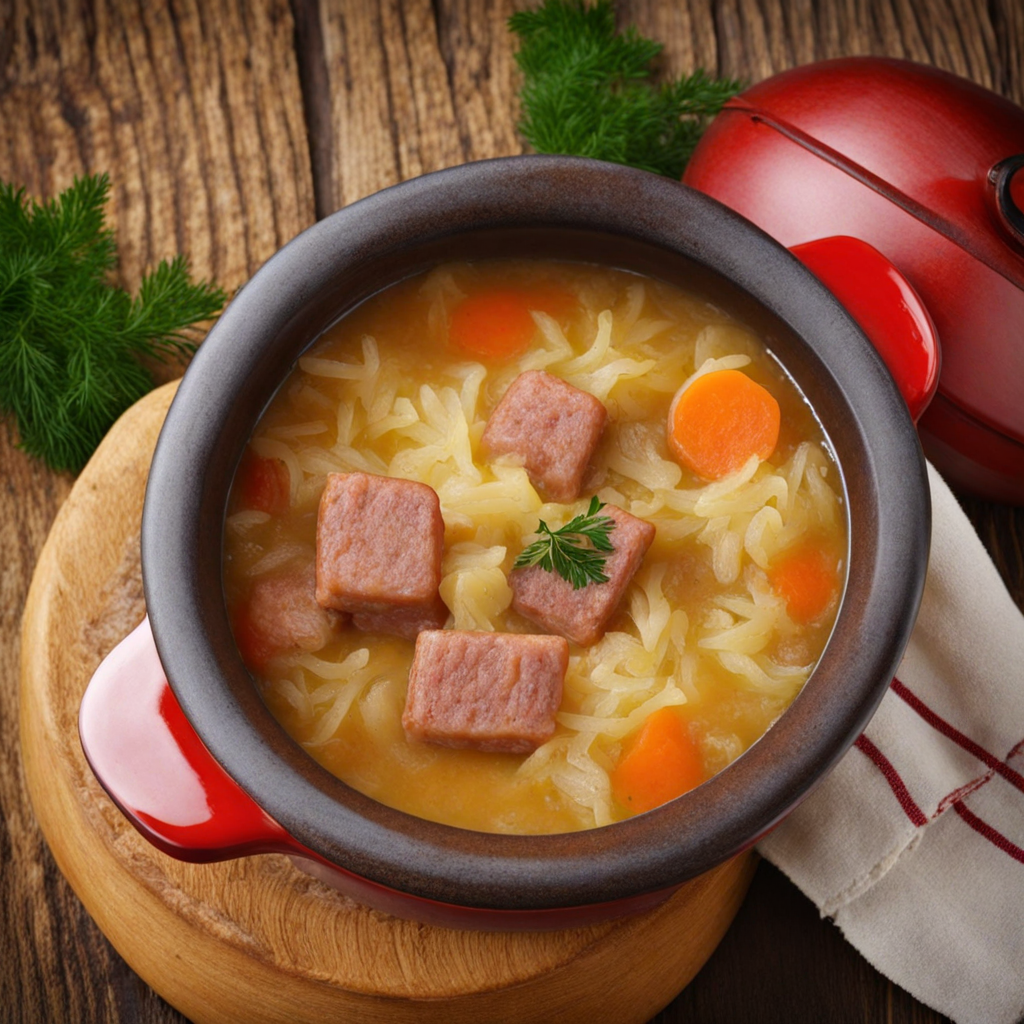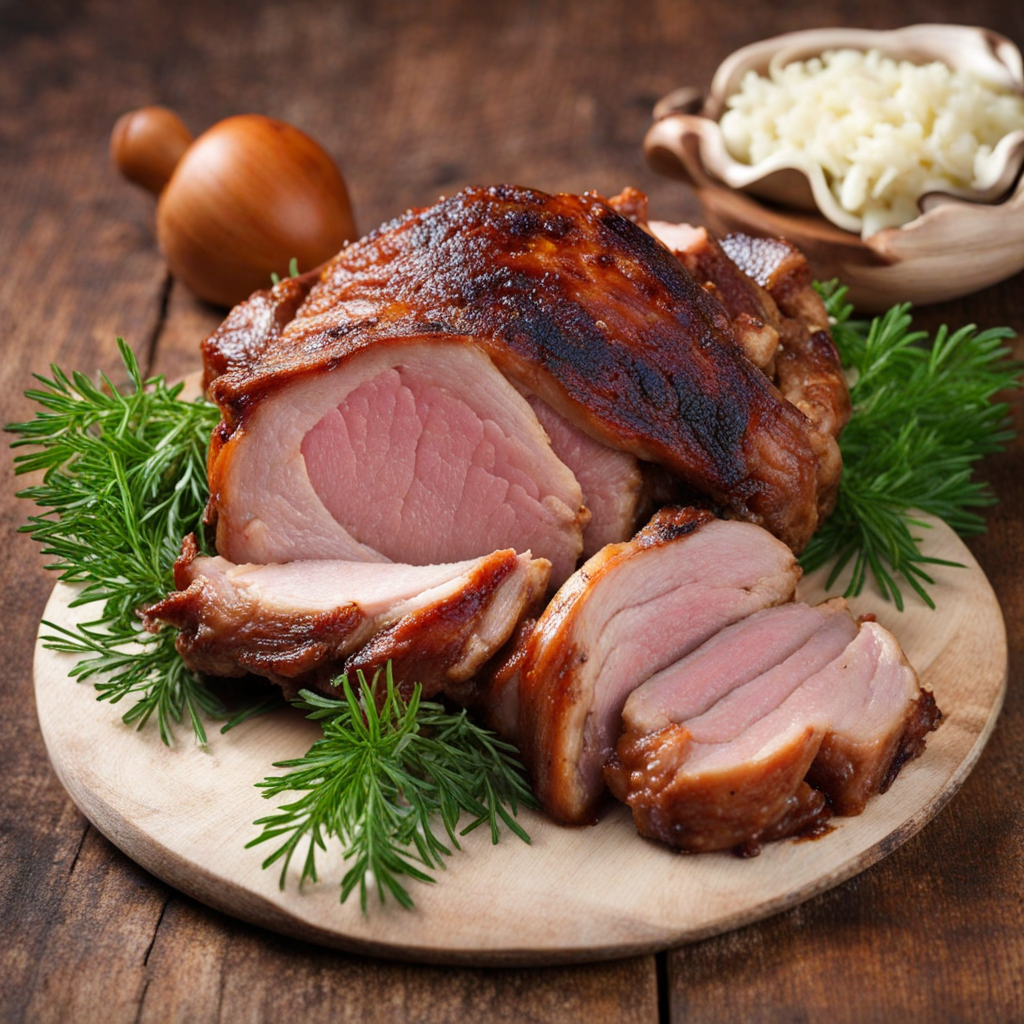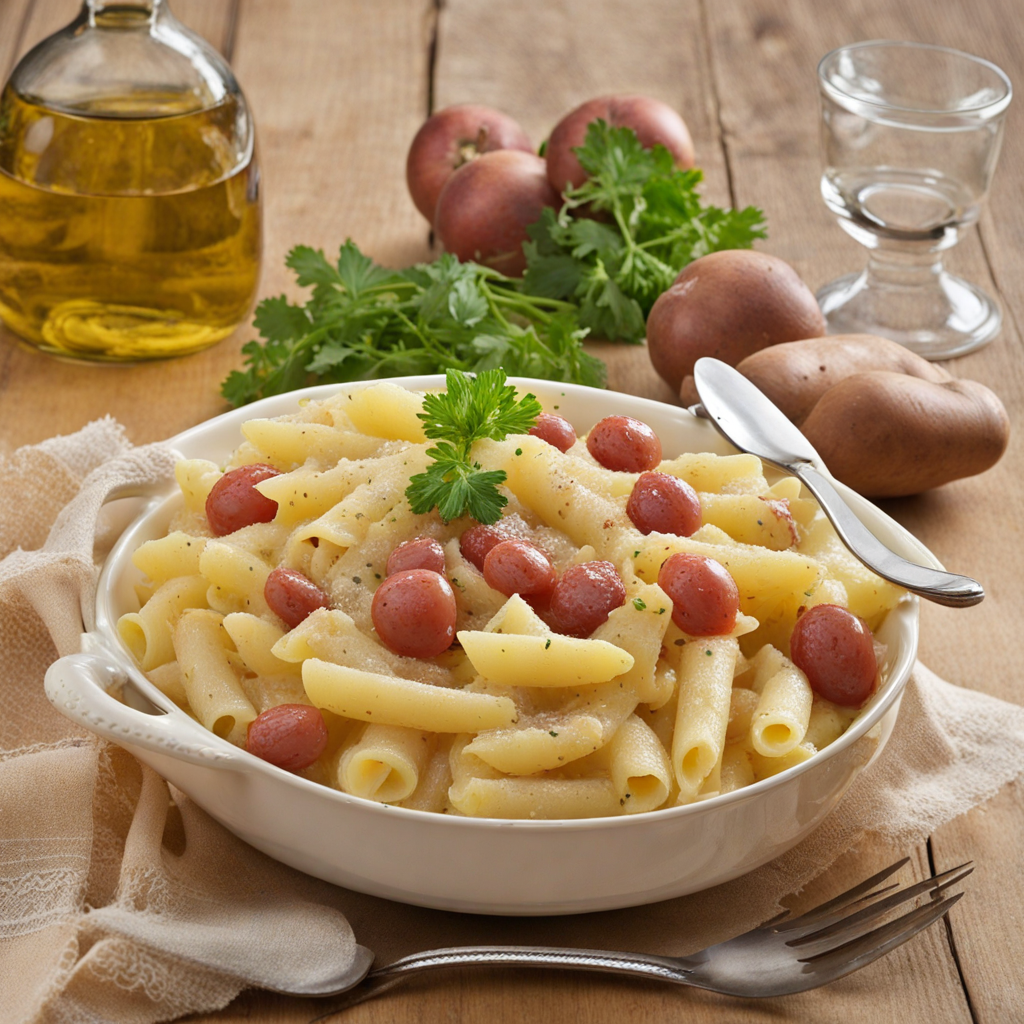Kapustnica
Kapustnica is a traditional Slovak soup that showcases the rich flavors of fermented cabbage, a staple ingredient in Slovak cuisine. This hearty dish is typically made with finely chopped fermented cabbage, which imparts a tangy and slightly sour note, perfectly balancing the flavors of the other ingredients. The soup often includes a variety of meats, such as smoked sausage, pork, or even beef, which add depth and richness to the broth. The combination of spices, including pepper, caraway seeds, and bay leaves, enhances the overall taste, creating a warm and comforting experience that is especially cherished during the winter months and festive seasons. What sets Kapustnica apart is its versatility; families often have their own cherished recipes passed down through generations. Some versions may include additional ingredients like dried mushrooms, potatoes, or even beans, contributing to the soup's texture and making it a filling meal. The use of dried plums or apples in certain recipes introduces a subtle sweetness that beautifully contrasts with the sourness of the cabbage, resulting in a complex flavor profile that is both savory and slightly sweet. Typically served hot, Kapustnica is often accompanied by crusty bread or homemade dumplings, making it a complete and satisfying dish. The vibrant, golden broth glistens with the rich hues of the meats and vegetables, inviting you to savor each spoonful. Whether enjoyed on a chilly day or at a festive gathering, Kapustnica is a true representation of Slovak culinary tradition, offering a unique taste that captures the essence of the region's flavors and warmth.
How It Became This Dish
The History of Kapustnica: A Culinary Journey Through Slovakia #### Origins and Early History Kapustnica, a traditional Slovak soup, is more than just a culinary delight; it’s a dish steeped in history and culture. The name itself derives from "kapusta," the Slovak word for cabbage, which is the primary ingredient. This hearty soup has its roots in the agricultural practices of Central and Eastern Europe, where cabbage has been cultivated for centuries. The origins of Kapustnica can be traced back to medieval Slovakia, where cabbage was a staple food due to its durability and nutritional value. It could be stored throughout the winter months, making it an essential part of the Slovak diet, particularly during the harsh winters. The earliest versions of Kapustnica likely consisted of simple ingredients: shredded cabbage, water, and salt, cooked together to create a nourishing broth. As trade increased and cultural exchanges occurred over the centuries, the recipe for Kapustnica began to evolve. The introduction of new ingredients such as smoked meats, mushrooms, and spices transformed the dish from a basic soup into a complex, flavorful meal. It became a reflection of both the local agriculture and the culinary influences that permeated the region. #### Cultural Significance Kapustnica holds a special place in Slovak culture, particularly during festive occasions. It is traditionally served during Christmas Eve dinner, known as "Štedrý večer," which is a time for family gatherings and celebration. The soup is often prepared with a mix of ingredients, including dried mushrooms, sausage, and sometimes even bits of smoked fish. Each family has its own variation, passed down through generations, making Kapustnica not just a dish but a cherished family tradition. The preparation of Kapustnica is also symbolic. It represents the abundance of the harvest and the importance of sharing food with loved ones. In many Slovak households, the act of preparing Kapustnica together becomes a bonding experience, reinforcing family ties and cultural identity. This communal aspect of cooking is essential in Slovakia, where food serves as a conduit for social interaction and connection. In addition to its festive role, Kapustnica is also enjoyed throughout the year, often served in restaurants and at family gatherings, emphasizing its versatility and popularity across various contexts. Slovaks take great pride in their culinary heritage, and Kapustnica is a quintessential representation of that pride. #### Development Over Time As Slovakia underwent significant political, social, and economic changes, so too did the dish of Kapustnica. The 20th century brought about a wave of modernization and globalization, impacting traditional food practices. While many Slovaks remained committed to their culinary roots, the introduction of convenience foods and new cooking methods began to influence how Kapustnica was prepared. Instant soups and pre-packaged ingredients made their way into the kitchens of modern Slovak families, leading to a departure from traditional methods in some households. However, the late 20th and early 21st centuries saw a resurgence of interest in traditional Slovak cuisine, including Kapustnica. As a result of this revival, many people began to embrace the importance of homemade food and the stories behind different recipes. Ethnic festivals, culinary showcases, and cooking classes aimed at preserving Slovak culinary traditions have become increasingly popular, fostering a renewed appreciation for dishes like Kapustnica. In contemporary cuisine, Kapustnica has expanded beyond its traditional roots. Chefs and home cooks alike experiment with various ingredients and presentation styles, incorporating influences from international cuisine. While the classic recipe remains beloved, variations exist that include modern twists, such as the addition of exotic spices or alternative proteins like tofu or seitan for vegetarian versions. These adaptations reflect a broader trend in the culinary world where tradition meets innovation, allowing Kapustnica to remain relevant in today’s food landscape. #### The Ingredients: A Reflection of Regional Diversity The ingredients of Kapustnica vary significantly across Slovakia, reflecting the diverse agricultural practices of the region. In the north, where farming is more common, you may find hearty versions with a focus on meat, often featuring smoked sausage or ham. In the more mountainous regions, foraged mushrooms and herbs contribute to a more rustic and earthy flavor profile. The use of sauerkraut is another important aspect of Kapustnica. It not only adds a tangy flavor but also symbolizes the preservation techniques that were essential for survival in the past. Fermentation, a practice common in many cultures, allowed Slovaks to store food for longer periods, and sauerkraut became a vital part of the diet, particularly in winter months. Moreover, the art of making Kapustnica involves not only the ingredients but also the cooking process. Traditionally, the soup is simmered for several hours, allowing the flavors to meld and develop depth. The communal aspect of preparing Kapustnica often involves multiple family members, each contributing their own touch—whether it’s a secret spice blend or a particular way of slicing the cabbage. This tradition of collaboration in the kitchen enhances the dish’s significance, creating a tapestry of family history and shared culinary knowledge. #### Kapustnica Today: A Culinary Symbol In the modern era, Kapustnica has transcended its humble beginnings to become a symbol of Slovak identity. It is a dish that tells the story of the people, their land, and their history. For Slovaks living abroad, Kapustnica serves as a connection to their homeland, a taste of nostalgia that evokes memories of family gatherings and festive celebrations. Culinary tourism has also played a role in elevating Kapustnica’s status. Food enthusiasts from around the globe are increasingly interested in exploring traditional Slovak cuisine, with Kapustnica often highlighted as a must-try dish. Slovak restaurants and food festivals showcase this rich heritage, allowing both locals and visitors to experience the warmth and depth of Slovak culinary traditions. In conclusion, Kapustnica is more than just a soup; it is a reflection of Slovakia's history, culture, and resilience. From its ancient roots to its modern adaptations, it embodies the spirit of Slovak hospitality and the importance of food in forging connections. As it continues to evolve, Kapustnica remains a beloved dish, a testament to the enduring power of tradition and the joys of sharing a meal with loved ones.
You may like
Discover local flavors from Slovakia







